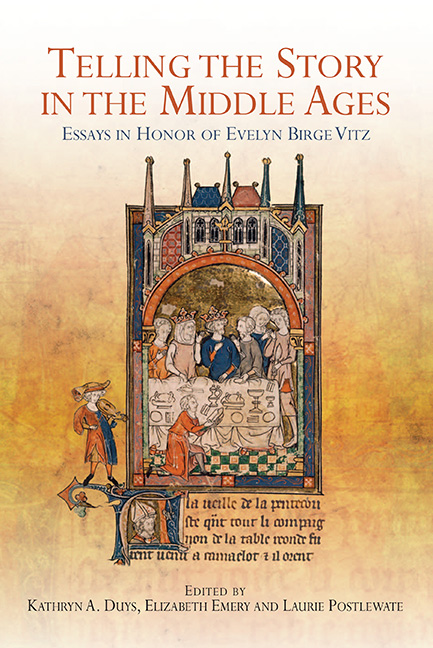The Storyteller’s Verbal jonglerie in ‘Renart jongleur’
Published online by Cambridge University Press: 17 June 2021
Summary
Representations of storytellers and their performance within medieval narratives provide rich material for study. Particularly revealing in this regard is a subset of medieval narratives in which characters temporarily assume the identity of a professional storyteller. In such key moments, readers or listeners witness the process by which an actual, extradiegetic storyteller constructs the fictional figure of an intradiegetic storyteller. The tale of ‘Renart jongleur’ – branch Ib of the Roman de Renart – is one such narrative. This story, wherein Renart disguises himself as an inept Breton minstrel, shows us how the author constructs Renart's identity as a storyteller.
In ‘Renart jongleur’ (also sometimes referred to as ‘Renart teinturier’), Renart the fox paradoxically conceals his verbal prowess behind the mask of an incompetent minstrel whose unmasking reveals and affirms Renart's essential identity as a master narrator. The author structures the branch using a complex verbal game in which the power and authority of verbal expression continually passes from one character to another (from Noble to Isengrin, from Isengrin to Tibert, from Tibert to Poncet and so on) until the dénouement when Renart assumes the place of primary storyteller and asserts his verbal domination through exclusive possession of the power and pleasure that language confers. In telling his story, the medieval author of ‘Renart jongleur’ self-reflectively uses his own narrative to assert the ultimate power of storytelling and storytellers.
In the pages that follow, we first establish the essentially linguistic nature of the fox's disguise. We analyze how Renart conceals his powerful mastery of speech under the mask of an innocuous and inept minstrel. We then study the ironic inversion that propels the narrative, a reversal by which Renart, disguised as a professional storyteller, cedes verbal expression to others to become the auditor of stories of his own adventures. Renart yields the pleasure of storytelling and the power to direct the plot to other characters until he captures them in his verbal trap and reduces them to silence. The branch reaches its culmination when Renart is reborn as the narrator of his own story and regains mastery of both the narrative and the laughter that the narrative elicits.
- Type
- Chapter
- Information
- Telling the Story in the Middle AgesEssays in Honor of Evelyn Birge Vitz, pp. 31 - 46Publisher: Boydell & BrewerPrint publication year: 2015

